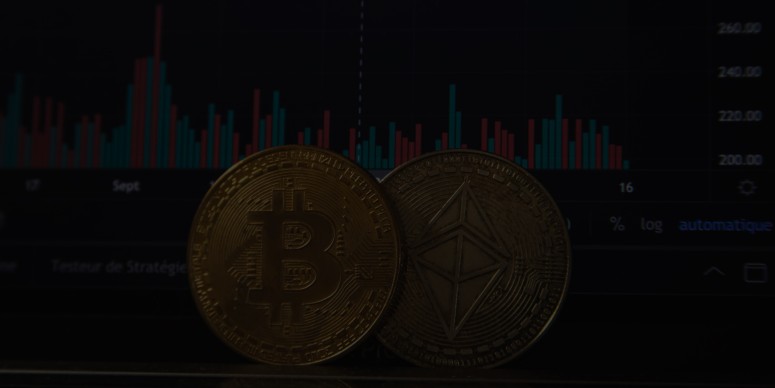Living in a digital world means that digital asset comes up in many contexts. In this blog post, we ask three important questions about digital assets and set out to explain what is it exactly. A digital asset might sound like a financial term that most of us wouldn't believe has anything to do with our lives, but in fact, most of us interact with digital assets daily. The movies we stream from Netflix, the documents we work in the cloud, or photos we share - these are our everyday digital assets. They are not to be mistaken with crypto assets, so go over your
blockchain terminology for business leaders. But let's not rush ahead of things and start from the very beginning.While
‘digital assets’ are the youngest asset category, it is an established one and predates cryptocurrencies by at least a decade. Somewhat surprisingly there is no commonly accepted definition of what a ‘digital asset’ is. Let us try and unpack it.
The first part of the term ‘digital’ is usually defined as:
‘electronic technology that generates, stores, and processes data in terms of two states: positive (expressed as number 1) and non-positive (expressed as number 0)’ and does not present a problem. There is no uncertainty about it. The second part of the term ‘asset’ is generally understood as ‘
something of value’ and this can be open to interpretation as ‘value’ is subjective.
Based on
data management and
legal sources we can define a ‘digital asset’ as
a collection of binary data which has to meet the four following criteria:1. It is
self-contained, i.e. a complete store of value on its own inside digital environments
2. It is
uniquely identifiable, otherwise, it is not possible to trade it
3. It
has value, which is the fundamental reason why someone would want to acquire such a digital asset in the first place.
4. It does
not include any underlying non-digital asset or liability (unless also digital).The last attribute means that
from a legal perspective a photo of an oil painting i.e. a digital asset does not give its holder the right or interest in the painting itself. Alternatively, tokens representing fractions of assets such as real estate or art are worthless without a legal contract that gives those tokens bearer rights over the underlying assets.Let’s apply the above framework to Bitcoin.1.
Bitcoin is self-sufficient i.e. it does not need any other contracts or assets to back its value. It is a native coin of the eponymous blockchain network and represents a cryptographically secure digital store of value recorded on a distributed ledger.
2. Bitcoins are fungible and thus do not have unique identities. However,
Bitcoin balances are stored in uniquely identifiable ‘unspent transaction outputs’ that can only be spent by the owner of the recipient address.
3.
Bitcoin has value because it is (i) an investment in a scarce digital commodity with an ever increasing adoption and network effect (ii) an instrument of value transfer to anybody anywhere in the world in a and censorship-resistant, pseudonymous and cost-effective way.
4.
Bitcoin does not represent or include any other off-chain assets or assets from other chains.Based on the above we have confirmed that
Bitcoin is a digital asset. Or even more specifically:
Bitcoin is a digital commodity from both technical and legal perspectives and can be bought and sold in cash markets or via derivatives such as futures. Indeed in the US, Bitcoin and other ‘virtual currencies’, have been determined to be commodities under the Commodity Exchange Act and are regulated by CFTC.
Obviously, Bitcoin and other cryptocurrencies are just one of many personal digital asset classes which include:
- Personally identifiable information or PII (social security number, address, etc.)
- Other personal information (health records, government filings, etc.)
Financial information and assets (online bank and brokerage accounts and balances)
- Digital content assets (images, video, blogs, etc.)
- User accounts (e.g. a social media account, email account, etc.)
- Domain names and network infrastructure assets (IP addresses for the websites)
- Data packages (e.g. big data and IoT data collections)
- Digital models (e.g. spreadsheets, algorithms, etc.)
- Digital commodities (e.g. cloud server or storage capacity)
- In-game virtual assets (‘skins’, ‘avatars’, etc.)Governments and corporates add a number of other digital asset classes such as big data, E-governances and artificial intelligence and this taxonomy is constantly growing and changing.Digital assets are everywhere and
their importance is growing daily. A significant part of our economy is in the digital space. According to the World Economic Forum
“Intangible assets, including data, constituted 84%, or $21 trillion, of S&P 500 company value in 2018”. From an economic perspective, digital assets offer practically unlimited growth potential in a sustainable way in a finite and resource-constrained world.
Digital assets such as the internet of things, blockchain, augmented reality and artificial intelligence
are already melding with other elements of the fourth industrial revolution such as 5G, robotics, 3D printing, drones into a new economic paradigm. This paradigm calls for a new digital reference asset or ‘digital gold’ which will be a universal benchmark and a store of value. Bitcoin is the best candidate to take this place.
Digital assets are a collection of binary data which are: (i) self-contained, (ii) uniquely identifiable, (iii) have value, and (iv) and do not include any underlying non-digital asset or liability. Digital assets are expected to be the principal driver of sustainable economic growth in the twenty-first century. Bitcoin is a digital asset that is uniquely positioned to become a universal store of value or ‘digital gold’.
Start your learning journey and get involved in the Blockchain Revolution!
